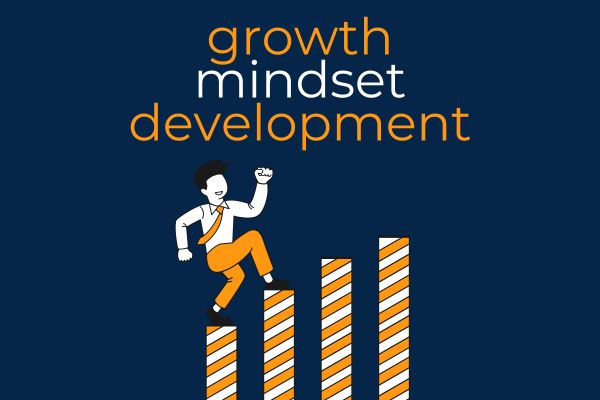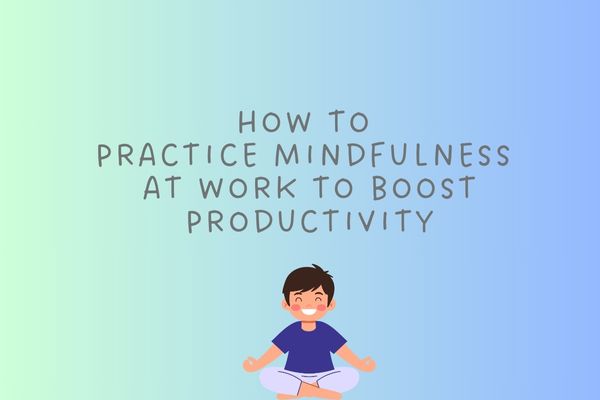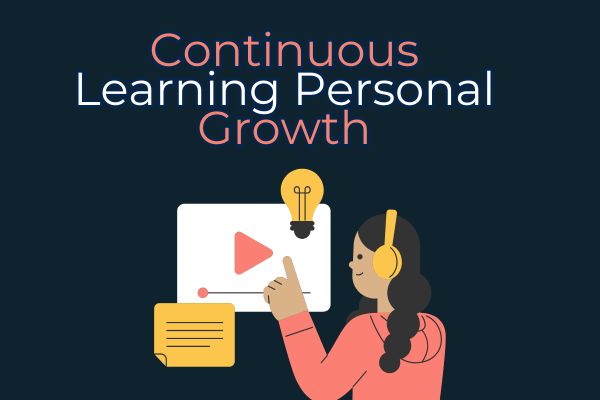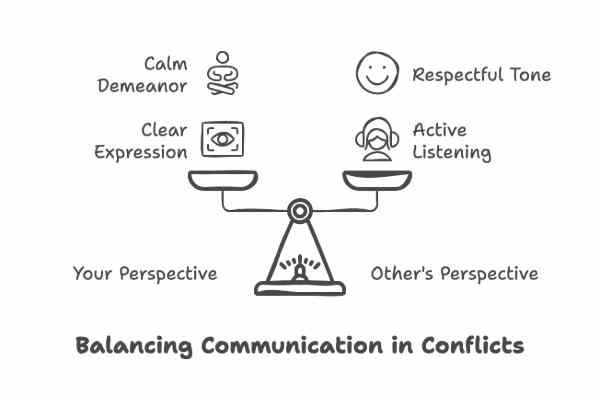A growth mindset is the belief that abilities, intelligence, and talents can be developed through effort, learning, and persistence. Coined by psychologist Carol Dweck, this concept has transformed how people view challenges, failures, and opportunities for self-improvement. Adopting a growth mindset can lead to greater resilience, better problem-solving skills, and a more fulfilling life. In this article, we’ll explore practical ways to cultivate a growth mindset in everyday life.
Understanding the Growth Mindset
What Is a Growth Mindset?
A growth mindset is the opposite of a fixed mindset. While a fixed mindset assumes that abilities and intelligence are static, a growth mindset embraces the idea that skills can be improved with time and effort. People with a growth mindset:
- View challenges as opportunities.
- Embrace failures as learning experiences.
- Believe in their ability to grow through practice and dedication.
Why Is a Growth Mindset Important?
Developing a growth mindset has numerous benefits:
- Improved Learning and Performance: It encourages continuous learning and better problem-solving skills.
- Increased Resilience: A growth mindset helps you bounce back from setbacks.
- Stronger Relationships: People with a growth mindset often handle conflicts and feedback constructively.
Steps to Develop a Growth Mindset
1. Embrace Challenges
Challenges are opportunities to learn and grow. By stepping out of your comfort zone, you build resilience and acquire new skills.
Practical Tips:
- Take on New Tasks: Volunteer for assignments that require skills you’ve never used before.
- Reframe Difficulties: Instead of avoiding challenges, see them as opportunities to improve.
- Start Small: Begin with manageable challenges to build confidence.
2. Reframe Failure
Failure is often perceived negatively, but it’s a critical component of growth. Reframing failure as feedback helps you learn from your mistakes and improve.
Practical Tips:
- Reflect on Mistakes: After a setback, analyze what went wrong and what you can do differently next time.
- Celebrate Effort: Focus on the hard work you put in, even if the result wasn’t perfect.
- Learn from Role Models: Study the stories of successful individuals who overcame failures.
3. Cultivate Curiosity
Curiosity drives growth. By maintaining a desire to learn, you can uncover new opportunities and gain deeper insights into the world around you.
Practical Tips:
- Ask Questions: Be inquisitive about things you don’t understand.
- Explore New Topics: Dedicate time to hobbies or subjects you’re unfamiliar with.
- Challenge Assumptions: Question long-held beliefs and remain open to new perspectives.
4. Develop Resilience
Resilience is the ability to recover from setbacks and keep moving forward. It’s an essential trait for fostering a growth mindset.
Practical Tips:
- Practice Gratitude: Focus on what’s going well in your life, even during tough times.
- Set Realistic Goals: Break large tasks into smaller, achievable milestones.
- Seek Support: Surround yourself with positive influences who encourage growth.
5. Emphasize Effort Over Talent
A growth mindset emphasizes effort as the pathway to improvement. By valuing hard work over innate ability, you’ll be more motivated to tackle challenges.
Practical Tips:
- Acknowledge Hard Work: Recognize and appreciate the effort you or others put into achieving goals.
- Reward Progress: Celebrate small victories along the way to your ultimate goal.
- Avoid Comparisons: Focus on your personal journey instead of comparing yourself to others.
Also check: The Science of Self-Improvement
Daily Habits to Reinforce a Growth Mindset
1. Practice Self-Awareness
Understanding your thoughts and behaviors is the first step toward cultivating a growth mindset.
Practical Tips:
- Journal Regularly: Reflect on your daily experiences and identify areas for growth.
- Identify Triggers: Notice moments when you default to a fixed mindset and consciously reframe your thoughts.
- Set Intentions: Start each day with a growth-oriented goal.
2. Seek Constructive Feedback
Feedback is a powerful tool for self-improvement. When used effectively, it can highlight areas for growth and provide direction.
Practical Tips:
- Ask for Feedback: Seek input from peers, mentors, or supervisors.
- Receive Feedback Gracefully: Accept constructive criticism without becoming defensive.
- Act on Feedback: Use suggestions to improve your skills or performance.
3. Focus on “Yet”
Adding the word “yet” to your vocabulary can significantly shift your mindset. Instead of saying, “I can’t do this,” say, “I can’t do this yet.”
Practical Tips:
- Reframe Negative Thoughts: Replace fixed mindset statements with growth-oriented ones.
- Teach Others: Encourage friends or colleagues to adopt the “yet” mindset.
- Track Progress: Regularly review how far you’ve come in areas you once struggled with.
4. Surround Yourself With Growth-Minded People
The people you spend time with can influence your mindset. Surround yourself with those who inspire and challenge you to grow.
Practical Tips:
- Join Growth-Oriented Communities: Participate in groups or clubs that focus on learning and self-improvement.
- Build a Support System: Cultivate relationships with people who encourage and motivate you.
- Learn From Others: Observe how growth-minded individuals approach challenges and emulate their strategies.
Also check: The Art of Goal Setting
Overcoming Barriers to a Growth Mindset
1. Fear of Failure
Fear of failure can hold you back from taking risks and pursuing growth.
Strategies to Overcome:
- Redefine Success: Focus on learning and progress rather than perfection.
- Visualize Success: Imagine the positive outcomes of taking risks.
- Take Small Steps: Gradually face your fears to build confidence.
2. Negative Self-Talk
Negative self-talk can reinforce a fixed mindset and hinder your growth.
Strategies to Overcome:
- Practice Affirmations: Replace negative statements with positive affirmations.
- Challenge Limiting Beliefs: Question the validity of self-doubt.
- Seek Professional Help: If negative self-talk persists, consider working with a therapist or coach.
3. Fixed Mindset Triggers
Certain situations or people may trigger a fixed mindset response.
Strategies to Overcome:
- Recognize Triggers: Identify scenarios that make you feel stuck.
- Prepare Responses: Develop strategies for staying growth-oriented in challenging situations.
- Reflect and Adjust: After encountering a trigger, evaluate your reaction and plan for improvement.
The Role of Lifelong Learning in a Growth Mindset
A growth mindset thrives on continuous learning. Embracing lifelong education allows you to adapt to change, stay curious, and remain engaged.
How to Cultivate Lifelong Learning:
- Read Regularly: Explore books, articles, or blogs on topics that interest you.
- Take Courses: Enroll in online or in-person classes to learn new skills.
- Experiment: Try different approaches to tasks and learn from the results.
Real-Life Examples of Growth Mindset
1. Famous Figures With a Growth Mindset
- Thomas Edison: Viewed failed experiments as steps toward success.
- Michael Jordan: Used setbacks and failures as motivation to improve.
- Oprah Winfrey: Overcame early career challenges to build a media empire.
2. Everyday Heroes
Growth mindsets aren’t limited to celebrities. From students striving to improve their grades to entrepreneurs navigating failures, countless individuals exemplify the power of persistence and learning.
Conclusion
Developing a growth mindset is a journey that requires intentional effort and practice. By embracing challenges, reframing failures, cultivating curiosity, and fostering resilience, you can transform your perspective and unlock your full potential. Start small by incorporating growth-oriented habits into your daily life, and over time, you’ll build a mindset that empowers you to achieve your goals and thrive in the face of adversity. Remember, growth is a continuous process—celebrate every step along the way.






